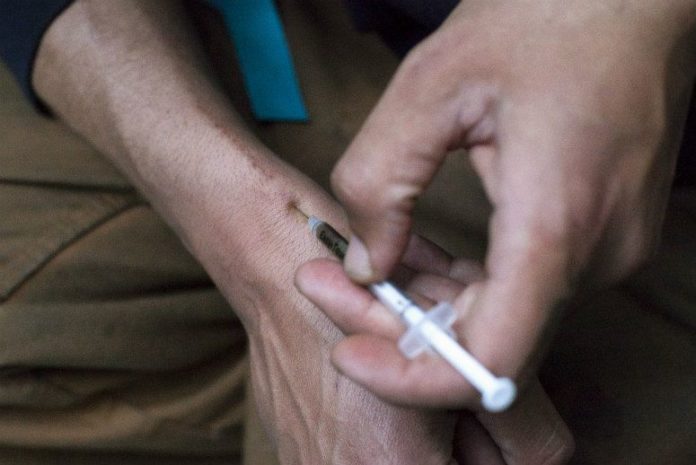
Heeding to months of warnings from the Centers of Disease Control and Prevention about the explosion in heroin use in America, the US government unveiled a $2.5 million plan to combat heroin use and trafficking in regions facing a severe heroin threat: Appalachia, New England, New York/New Jersey, Philadelphia/Camden and Washington, D.C./Baltimore. Coordinators in these five high-intensity drug trafficking regions will form what officials called a, “15-state network of experienced, connected law enforcement contacts.”
Announcing the ‘Heroin Response Strategy’ on August 17th, Michael Botticelli, Director of National Drug Control Policy, said the new plan will address the heroin and painkiller epidemics as both, “a public health and a public safety issue.” The new approach is aimed to treat more drug offenders as addicts within the public health system rather than as criminals who must serve long sentences in jail.
“This administration will continue to expand community-based efforts to prevent drug use, pursue ‘smart on crime’ approaches to drug enforcement, increase access to treatment, work to reduce overdose deaths, and support the millions of Americans in recovery,” Botticelli said in a statement.
According to the Centers for Disease Control and Prevention, overdose death rates have nearly quadrupled over the past decade, and heroin use has more than doubled among people aged 18-25. An estimated 45% of US heroin users are also addicted to prescription painkillers.
Senior officials of the National Drug Control Policy said the funds will be used for hiring, “a cop and a health data analyst,” in 15 of the nation’s 28 High-Intensity Drug Trafficking Areas — which cover about 17% of US counties and about 60% of the population — to focus on the treatment, rather than the punishment, of addicts.
The new hires will work under a law enforcement coordinator who will use the data to identify targets for police to go after across state lines, and a regional health coordinator who will analyze trends in the overdose data and devise strategies for combating spikes in drug use. In addition, the initiative will also train first responders on when and how to deploy medication that can reverse opioid overdoses.
Critics are skeptic though. Mayor Ted Gatsas of Manchester, New Hampshire, said, “Anything that we do to fight this epidemic is a great thing but I don’t think we need coordinators. We need funding to make sure that people have the opportunity to get into rehab.”
Marc Mauer, Executive Director of The Sentencing Project, is concerned that the strategy is still too reliant on the criminal justice system. “When the perception of the user population is primarily people of color, then the response is to demonize and punish. When it’s white, then we search for answers,” he told The Marshall Project.
There is a flip-side too. Funding used in the designated high-drug-trafficking areas can’t be used to expand drug treatment programs, thanks to a 1998 ban by Congress. That reality may limit the heroin response strategy’s ability to address the issue from a public health perspective.
This Article (White House To Spend $2.5 Million To Address Heroin Threat In 15 States) is free and open source. You have permission to republish this article under a Creative Commons license with attribution to the author and AnonHQ.com.







If they really wanted to stop the flow of heroin that is flooding the country they should focus on those states with known drug pipelines, massive ports of entry or multiple international airports in close proximity like new york, california, texas, new mexico, arizona, florida, philadelphia, washington, oregon & louisiana. once you do that then you lock down the # of prescriptions doctors are able to make to individuals each month of oxycontin and other synthetics like it, just as they have recently done with pseudoephedrine and all those derivatives that are needed to make methamphetamine where they have a tracking system that utilizes your drivers license and a nationwide network to track & limit the # of purchases an individual can make of these products. if they were to employ a similar software to track the pills prescribed, to who and by whom it would greatly reduce the amount of drugs that would be available on the streets & sure it may take a bit longer at the pharmacy to procure your monitored prescriptions but wouldn’t that amount of time that you’d then have to spend really be pretty insignificant, all things considered?
bullshit. let people do what they want. i like my heroin.